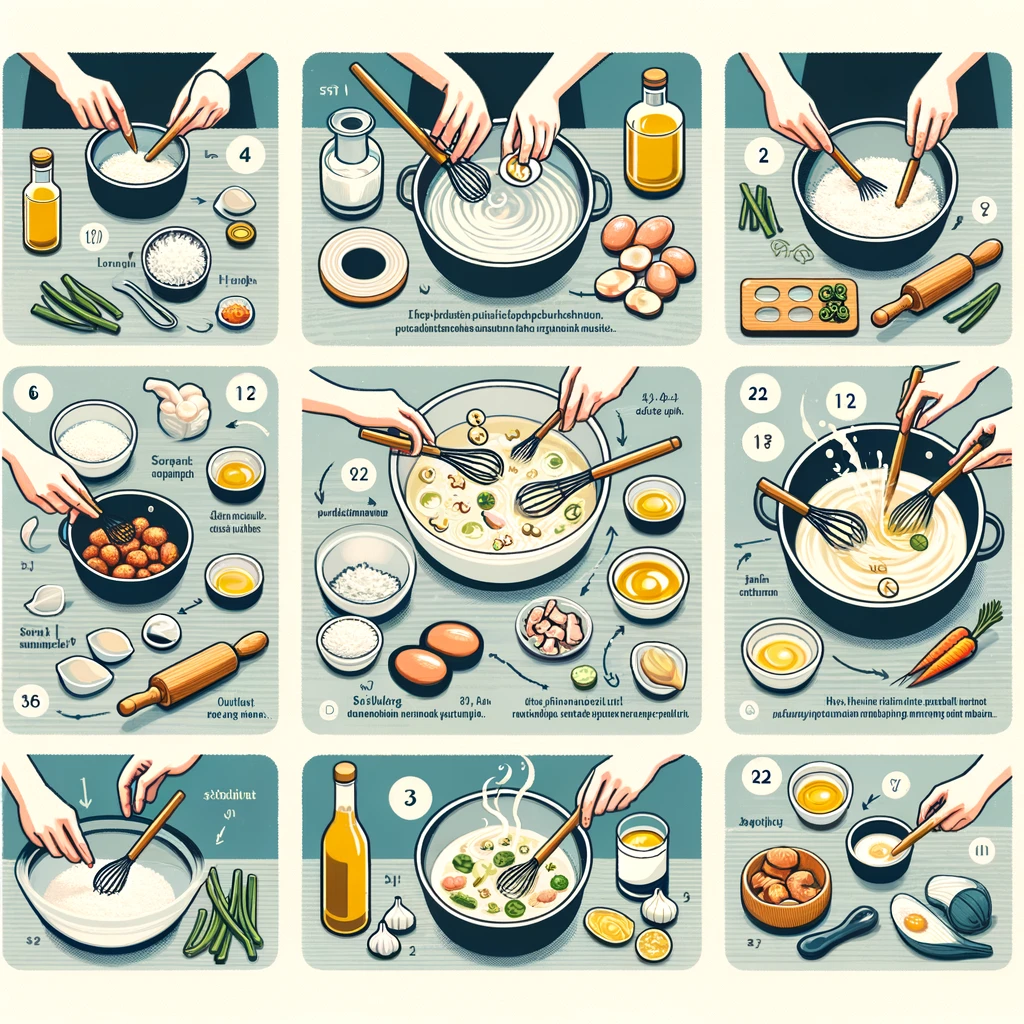Visual literacy
When we learn online, everything from pictures and diagrams to videos and graphics plays a big role in how well we understand the material. Being able to choose and use these visual elements wisely is what we call visual literacy. This skill is crucial not just for making your course look good, but for making it more effective for every student.
Visual literacy helps us communicate better in a world where we're constantly seeing and sharing images and videos. In this post, we're going to look at why visual literacy matters so much when you're picking out visuals for your online courses. We'll discuss how the right images can help students grasp complex information, remember it longer, and feel more connected to what they're learning.
Understanding visual literacy
So, what exactly is visual literacy? It's the ability to see, understand, and make sense of visual information. In simpler terms, it's about reading images and graphics the way we read words. When we're visually literate, we can interpret the messages that visuals are trying to convey, and we can also create visuals that effectively communicate our own ideas.
Why does this matter for online learning? Well, when you're learning through a screen, a lot of the information comes to you through visuals. If these images or videos are confusing or misleading, learning becomes much harder. On the other hand, good visuals can clarify difficult concepts and make learning more interesting and accessible.
Visual literacy isn't just a skill for artists or designers; it's a must-have for anyone who teaches or designs online courses. By developing your visual literacy, you'll be better equipped to choose visuals that add real value to your lessons. You'll know what makes an image effective and how to match the right visual with the right part of your course.
The impact of visual assets in online learning
Visual assets are more than just decoration in online courses – they're essential tools that help students learn better. Let's look at the different types of visual assets and see how they can make a difference in the learning process.
-
Images: A well-chosen image can explain complex ideas quickly. For example, an image of a cell structure in a biology course can give students a clear, visual representation of what might take paragraphs to describe in text.
-
Graphics: Graphics like charts and graphs can summarize data or trends in a way that’s easy to understand and remember. They're great for visualizing statistics in business courses or showing historical trends in social studies.
-
Videos: Videos can deliver a lot of information in a short time and in a dynamic way. They are especially useful for demonstrating processes, like a scientific experiment or a cooking technique, allowing students to see the action step by step.
-
Diagrams: Diagrams are excellent for breaking down and explaining the parts of something, like the components of a machine in an engineering course or the stages of cell division in biology.
These visual assets do more than just convey information; they help make learning more engaging and interactive. By seeing concepts in action or illustrated vividly, students are more likely to understand and retain the information. This is especially true for visual learners who grasp information better through images or videos than through reading text alone.
Using diverse visuals can cater to different learning styles and needs, making your course more inclusive. Everyone from auditory learners to kinesthetic learners can benefit when visuals are paired with texts and activities that engage other senses.
Diversity and inclusion
Promoting diversity and inclusion in visual assets is crucial for fostering an inclusive learning environment. By ensuring that visuals represent a wide spectrum of cultures, backgrounds, and experiences, we can cultivate a sense of belonging for all students. This not only validates identities but also expands worldviews, exposing learners to diverse perspectives and narratives in a respectful manner. Embracing diversity in visuals not only ensures representation but also encourages empathy and understanding among learners, contributing to a more inclusive educational experience.
Types of images
Visual assets are integral to enhancing both comprehension and engagement in online courses. Different types of images—literal, figurative, metaphorical, and instructional—serve unique purposes in this context, each contributing to the learning experience in distinct ways.
Literal Images
Literal images depict exactly what they represent, providing an exact representation of reality. Examples include:
Photographs of Historical Events: In a history course, photographs provide a direct visual reference to past events, helping students to better understand and remember the historical context.
- Detailed Anatomical Drawings: In a biology class, precise drawings of anatomical structures aid in the accurate understanding of the human body and its functions.
Literal images help clarify facts and provide concrete examples of the concepts being taught. They are invaluable for the accurate representation of material, ensuring that students have a clear and direct visual reference for the content they are learning.
Figurative Images
Figurative images offer an artistic representation that captures the essence of a subject with some level of abstraction. They may not depict reality exactly but aim to convey the feel or spirit of the subject matter. Examples include:
- Impressionistic Paintings: In an art course, impressionistic paintings might be used to illustrate different artistic techniques or movements, conveying the overall atmosphere and emotion of the scene rather than precise details.
- Abstract Diagrams: In subjects like mathematics or physics, abstract diagrams can represent complex concepts in a simplified, visual form.
Figurative images help students grasp the broader context and emotional undertones of a subject, enhancing their understanding through artistic expression.
Metaphorical Images
Metaphorical images represent ideas or concepts symbolically, conveying deeper meanings or abstract concepts through familiar visuals. Examples include:
- A Bridge to Discuss Connection: In a sociology course, a picture of a bridge can symbolise the concept of connection, illustrating how individuals or groups can be linked together.
- An Iceberg to Represent Psychology: In psychology, an iceberg image can symbolise the visible and hidden aspects of the human mind, helping students understand the concept of the conscious and unconscious mind.
These images encourage deeper thinking and help students grasp more abstract concepts by linking them to familiar visual metaphors. By doing so, metaphorical images can make complex or intangible ideas more accessible and relatable.
Instructional Images
Instructional images are clear and straightforward representations designed specifically to educate or guide. Examples include:
- Step-by-Step Diagrams: In a cooking class, step-by-step diagrams can illustrate the process of preparing a dish, making it easy for students to follow along.
- Infographics: In a business course, infographics can summarise key information or data, presenting it in a visually engaging and easily digestible format.
Instructional images are particularly effective in breaking down complex processes or information into manageable, understandable parts, facilitating learning and retention.
Examples
Both images are well-suited to the topic of "time management." The literal image of a busy city street during rush hour visually conveys the hectic pace of daily life, reflecting the constant motion and limited time in urban settings. The metaphorical image, with a clock and everyday objects swirling around it, artistically represents the challenge of managing time amidst a flurry of daily activities and responsibilities. Together, these images encapsulate the challenges and complexities of effectively managing time in a fast-paced world.
By using a range of image types judiciously within your course materials, you can cater to a broad range of learning preferences. Literal images can anchor learning with clarity and precision, while metaphorical images can spark imagination and deeper conceptual understanding. Together, they create a richer, more engaging online learning environment.
Here are two photographic images suitable for the topic of "environmental sustainability and renewal":
-
Literal Image: This image captures a person's hands planting a young tree in soil. It shows the hands, the tree, and the earth in close detail, representing direct action toward environmental conservation.
-
Metaphorical Image: This photograph shows a dry, cracked desert landscape with a single green sprout emerging from the cracks. It symbolises hope and renewal in a harsh environment, reflecting the potential for regeneration and resilience.
Both images are photographic and relate to the broader theme of environmental care, showcasing both direct action and the metaphorical hope for recovery and sustainability.
Additionally, the images could be a metaphor for:
-
Mindfulness and Growth – The contrast of the thriving plant in a desolate environment can serve as a metaphor for mindfulness amidst chaos. It symbolises finding a centre of calm and growth within oneself, regardless of external conditions.
-
Minority Voices in Society – The single green shoot amidst a desolate landscape could be a metaphor for the power and importance of minority voices in a largely uniform society. It emphasises how even a single, seemingly small voice can bring change and vitality to a broader, stagnant environment.
Criteria for selecting visual assets
Choosing the right visual assets for your online course isn't just about picking the prettiest pictures or the flashiest videos. There are several important factors to consider to ensure that the visuals you use enhance learning and engagement. Here are the key criteria to keep in mind:
-
Relevance: The visuals should directly relate to the course content. An image or video must add value by reinforcing the learning objectives or clarifying complex concepts. For instance, a diagram of the human heart is vital in a biology course on human anatomy but would be out of place in a literature class.
-
Clarity: Visuals must be clear and easily understandable. A cluttered or overly complicated graphic can confuse more than it clarifies. Ensure that each visual is simple enough to be understood at a glance yet detailed enough to convey the necessary information.
-
Quality: High-resolution and professionally designed visuals not only look better but also convey professionalism and credibility. Poor-quality images or grainy videos can distract from the learning experience and may even undermine the perceived value of the course.
-
Accessibility: Make sure that all visuals are accessible to all students, including those with visual impairments. Use alt text for images, provide captions and transcripts for videos, and ensure that colours and designs are visible to those with colour vision deficiencies.
-
Copyright: Always use visuals that you have the right to use. This can mean creating your own, purchasing them, or using royalty-free images from reputable sources. It's important to respect copyright laws to avoid legal issues and to model ethical behaviour for students.
Include some information on sources
By keeping these criteria in mind, you can select visuals that are not just attractive but are effective educational tools. They should help students grasp the material better, remember it longer, and engage more deeply with the content. In the next section, we'll delve into practical tips for applying visual literacy skills to make wise choices about the visuals you use in your courses.
Visual literacy practices for learning designers
Enhancing your visual literacy skills isn't just about understanding visuals; it's about using them to make your online courses more effective. Here are some practical tips for learning designers:
-
Evaluate Visuals for Educational Effectiveness: When selecting an image or video, ask yourself if it helps achieve the learning objectives. Does it make a concept clearer? Can it replace a long text explanation? Does it engage students in a way that words alone might not?
-
Integrate Visuals Thoughtfully: Place visuals where they will have the most impact. For example, an introductory video might be best at the start of a course to engage and motivate learners, while diagrams could be interspersed within the text to illustrate key points as they arise.
-
Create Custom Visuals When Necessary: Sometimes the perfect visual doesn’t exist, and you might need to create it. Tools like Canva or Adobe Spark make it easy to create professional-quality images and graphics, even for those without a graphic design background. Also, the DX team is there to help.
-
Consistency is Key: Use a consistent style and quality of visuals throughout your course. This not only looks more professional but also helps create a cohesive learning experience. Consistent use of colours, fonts, and layout can help reinforce learning as students know what to expect visually.
-
Seek Feedback: Get feedback on your visuals from colleagues or focus groups made up of potential students. What makes sense to you might not be clear to others, and different perspectives can help you identify which visuals work best.
-
Stay Updated: Visual literacy and design trends evolve, so it’s important to stay informed about new tools, techniques, and best practices. This can involve attending workshops, following relevant blogs, or participating in online forums.
By applying these practices, you can more effectively use your visual literacy skills to select and create visuals that enhance learning and make your online courses more engaging and effective. In the next section, we'll look at some tools and resources that can help you improve and apply your visual literacy skills in course design.
Tools and resources for enhancing visual literacy
Improving your visual literacy and finding the right tools to create engaging course visuals can transform the learning experience you offer. Here are some tools and resources that can help course designers enhance their visual literacy and create better visual assets:
-
Design Software and Online Tools:
- Canva: Great for creating custom graphics, presentations, and infographics with an easy-to-use interface.
- Adobe Creative Cloud: Offers professional-grade tools like Photoshop and Illustrator for high-quality image editing and creation.
- Piktochart: A user-friendly tool for creating infographics and visual data representations.
- Venngage: Useful for making engaging infographics and reports with templates tailored to educational needs.
-
Educational Resources:
- The Visual Communication Guy: A website offering tips, tutorials, and infographics on how to use visuals effectively in communication.
- Lynda.com: Now LinkedIn Learning, which provides courses on everything from basic graphic design to advanced video production.
- Teaching Channel: Offers videos and articles on integrating visual literacy into teaching practices.
-
Communities and Forums:
- Behance: Explore projects from other creators for inspiration and connect with professional designers.
- Reddit’s r/graphic_design: A place to ask questions, share designs, and receive feedback from a community of graphic designers.
- E-Learning Heroes: A community for e-learning professionals where you can find examples, downloads, and advice on course design.
-
Books on Visual Literacy:
- "Visual Literacy: Learn to See, See to Learn" by Lynell Burmark: An insightful book that emphasises the educational power of visuals.
- "The Power of Visual Storytelling" by Ekaterina Walter and Jessica Gioglio: Offers advice on how to use visuals to tell compelling stories in marketing, which can be adapted for educational purposes.
By utilising these tools and resources, you can continue to develop your visual literacy skills and keep your course content fresh and engaging. Leveraging visuals effectively in your online courses not only enhances learning but also makes the educational journey more enjoyable and impactful for your students.
Conclusion
Visual literacy is more than just an ability – it's a crucial skill that enhances how we teach and how students learn in an online environment. By understanding and applying the principles of visual literacy, we can select and create visual assets that not only capture the attention but also deepen understanding and retention of course content.
Throughout this post, we've explored what visual literacy involves, the significant impact of visual assets in online learning, the criteria for selecting effective visuals, practical tips for applying visual literacy in course design, and the tools and resources available to support this process. Each element is geared towards empowering you, the course designer or educator, to harness the power of visuals to create more dynamic and effective learning experiences.
As the digital landscape continues to evolve, the role of visual literacy will only grow in importance. I encourage you to take these insights and start integrating more thoughtful and impactful visuals into your courses. Experiment with different tools, seek feedback, and keep learning about visual literacy. Your efforts will not only enhance your teaching but also enrich your students' learning journeys.
Let's make learning not just informative but visually engaging and memorable. Embrace visual literacy as a key component of your educational toolkit and watch as it transforms the online learning experience for your students.












